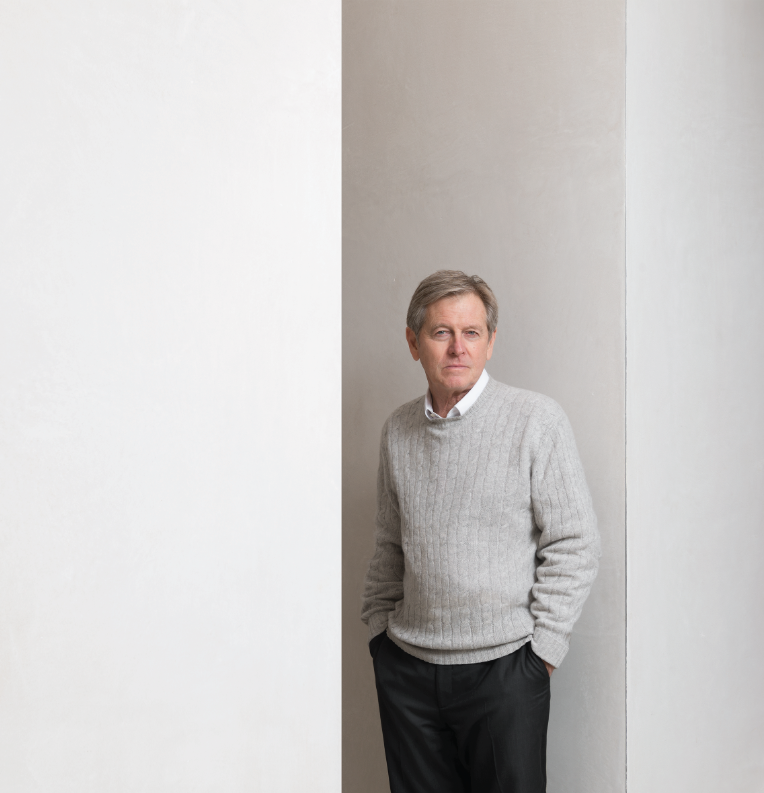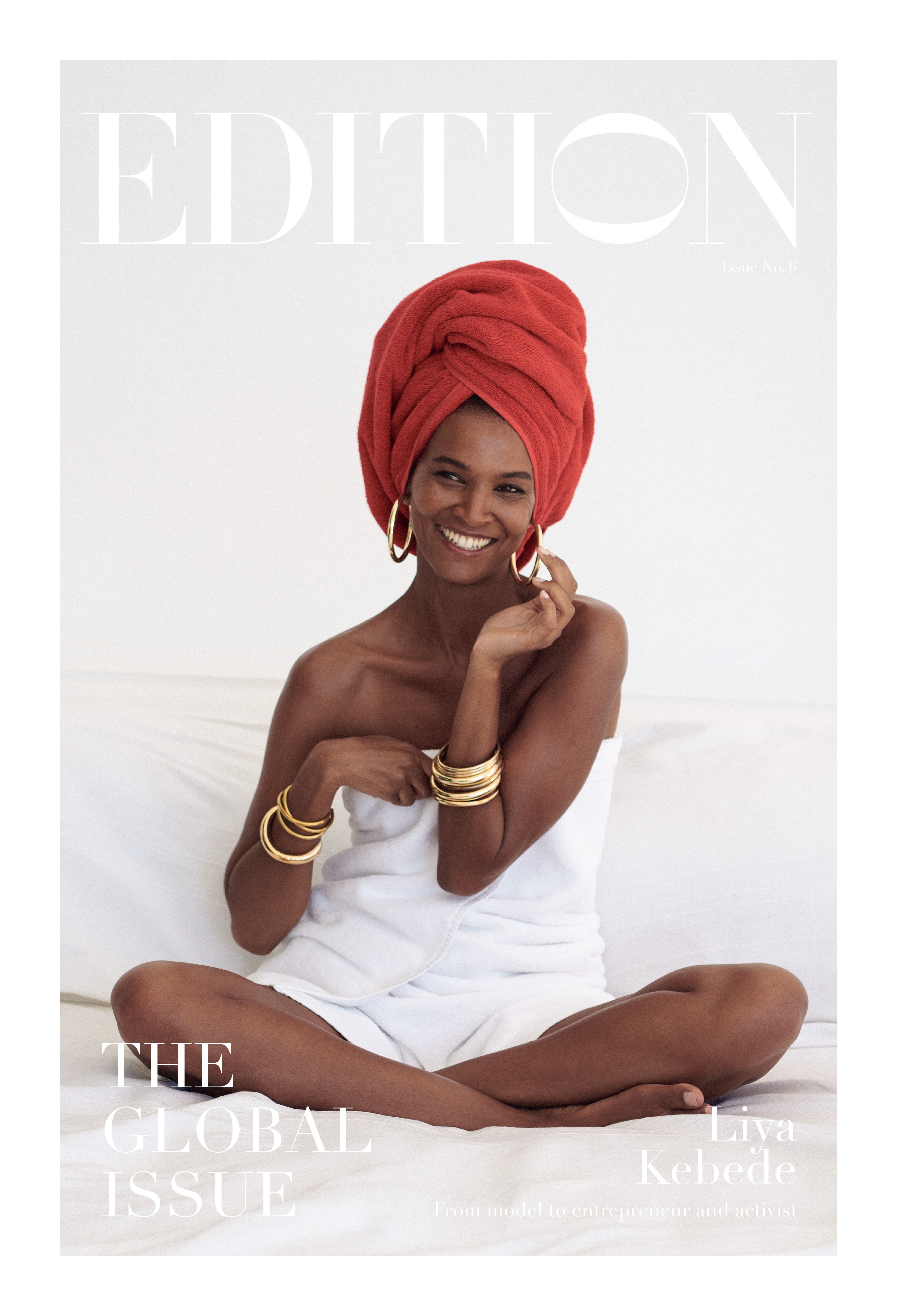
Global Issue
Global Issue: Editor’s Letter
Editor’s Letter
John Fraser
The Michelin-starred chef has a story to tell you through his cooking
Pundy’s Picks for Conscious Travel
Six tips for considered and conscious travel
Genmaicha Martini Recipe
The classic martini plus the health benefits of green tea
The Spread Love Project by Nicholas Konert
How Nicholas Konert’s rainbow heart design became an international icon
Wade Davis
Anthropology is the antidote to today’s nativism says the scholar and author
Carla Sozzani
The future of retail according to the founder of legendary concept store 10 Corso Como
The Art of Migration
The power of art to inspire empathy and social action
John Pawson
Zen Buddhism and minimalist purity drive the celebrated architect
Amy Duncan
As the CBD line Mowellens expands into skincare, its founder shares the personal story behind her company
Sila Sveta
Moscow’s favorite media studio finds the perfect balance between art and commerce
David de Rothschild
In his calls for environmental awareness, the modern explorer finds harmony between man and nature
Can Fashion Be Sustainable?
Shaping a better world through what you buy – or don’t
Brendon Babenzian
Supreme’s former creative director wants to end the cycle of consumption with his new brand Noah
Lily Kwong
Nature invades the urban jungle in the landscape designer’s expansive projects
House of Yes
Behind the scenes with the Bushwick nightlife collective promoting inclusivity and consent culture
Vivie-Ann Bakos
DJ Extraordinaire
Chez Dede
A medium in which two world-traveling, adventurous spirits absorb the globe’s vast curiosities and share them freely
Jesse Israel
A meditation guide for extraordinarily large groups
Liya Kebede
The Ethopian model, activist, and entrepreneur uses her label Lemlem as a force for change
Immigration is, in its essence, a beautiful and invaluable thing. Starting from when the first groups left what is now Africa tens of thousands of years ago, the history of humankind has been shaped by a continuous flow of exoduses, diasporas, and relocations.
Today, according to the UN Refugee Agency, more than seventy million people are displaced worldwide, and an average of 37,000 people are forced to flee their homes every day due to war, persecution, conflict, natural disasters, and the consequences of climate change. This number is the highest ever recorded and is escalating with Venezuelans who are leaving their country in one of the world’s most recent and devastating migration emergencies.
Despite the difficult circumstances people may be leaving, immigrants still carry the hope for a better life and bring culture and values that create a more diverse and interesting society. Contrary to popular belief, migrants can have a positive economic impact on their receiving countries: In 2011, the American Economic Association released a study that stated that open borders would double the world’s GDP. If the developed world were to take in enough immigrants to enlarge its labor force by a mere one percent, it is estimated that the
additional economic value created would be worth more to the migrants than all of the world’s official foreign aid combined.
Still, the refugee conundrum is one of the most complex topics of our time, and the language around the subject is often divisive. We want to believe there is an intrinsic human desire to help those in need, but the reality is that most host
nations are unprepared to deal with the myriad of complications that come with a large influx of people, aggravating a rising global anti-immigrant sentiment and making room for right-wing populist parties to win elections across the globe.
To break through what seems to be a collective desensitization, we can turn to the power of art to shed light on the intricate circumstances surrounding the issue, evoke empathy, and inspire social action.
Iconic artists throughout history have depicted the matter: Diego Rivera painted the laborious life of workers, many of them Mexican, on the walls of the Detroit Art Institute in 1933; Jacob Lawrence’s 1940 sixty-panel “Migration Series” portrays the flight of over a million African-Americans from the South to the industrial North following the outbreak
of World War l; Mark Rothko and Willem de Kooning used abstract expression to illustrate the sentiment of their personal immigrant stories.
Art can be a language shared between individuals, nations, and cultures. Art can redeclare identities that have been lost or abandoned and give migrant voices a means of being heard in an often hostile society.
At a time when the borders between lands are continually being disputed, what does it mean to move across countries, to change nationalities, and to settle in new places? In the words of the Haitian writer Edwidge Danticat, “All immigrants are artists because they create a life, a future, from nothing but a dream. The immigrant’s life is art in its purest form.”
To celebrate the potential of art to catalyze public debate and change, we highlight six contemporary artists whose own migrations and those of their
ancestors have shaped their identities and the art they produce, bearing witness to historical events and shifts in cultural landscapes. Their work sparks a conversation about the global refugee crisis and speaks to the experience of those looking for a place in the world.
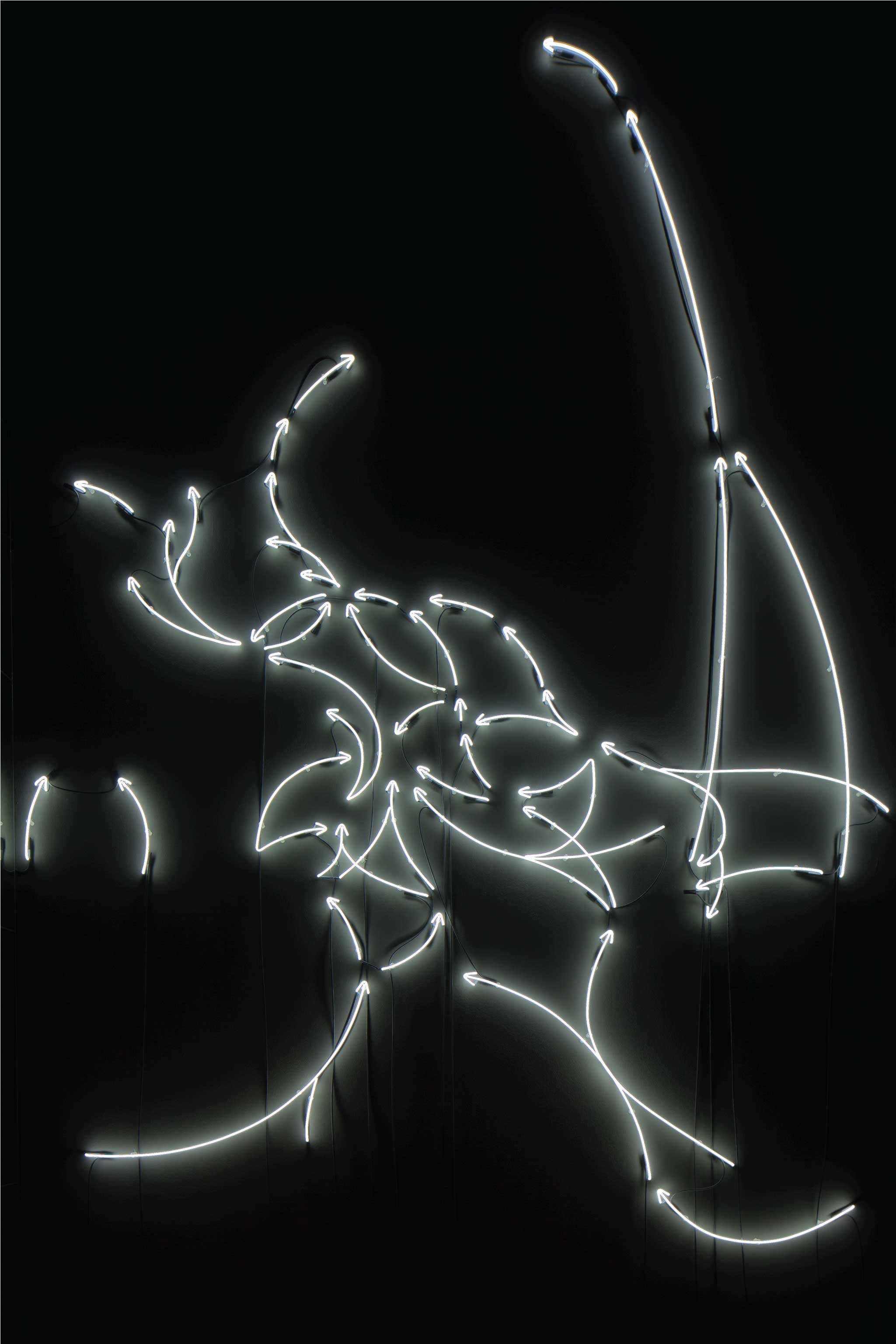
ALFREDO JAAR, (Kindness) of (Strangers), 2015 © Sergio Belinchon. Courtesy of the artist and Galerie Thomas Schulte, Berlin
Alfredo Jaar
The Chilean-born, New York-based multidisciplinary artist Alfredo Jaar’s practice investigates the unequal power relations and sociopolitical divisions of our time, and the questions around migration and discrimination in a globalized world are consistently present in his work.
In his 2000 performance The Cloud, he released three thousand balloons into the air over the Tijuana-San Diego border, representing the three thousand lives lost crossing that frontier between Mexico and the United States over a decade.
The artwork (Kindness) of (Strangers), a large-scale arrangement of neon arrows that correspond to the main travel routes of migrants in 2015, emphasizes the magnitude and complexity of the journey of migrants fleeing war and persecution.
In 2016, Jaar brought a public intervention to Art Basel in Switzerland, distributing 12,000 blue boxes labeled with the question “May I offer you a gift?” and the warning “This gift may change your life.” The boxes were wrapped with the image of the Turkish beach where Alan Kurdi’s body washed ashore in 2015, along with a call for donations to the Malta-based NGO Migrant Offshore Aid Station.
Halil Altindere
Turkish artist Halil Altındere has been leading a generation of practitioners in opposition to repressive developments in his country and worldwide for almost three decades, with the plight of Syrian refugees being a recurrent topic in his work.
In 2016, Altındere presented Space Refugee, an exhibition and film inspired by the life of Muhammed Ahmed Faris, the first Syrian astronaut who was part of a mission to the Mir Space Station in 1987 and today lives as a refugee in Turkey.
Combining factual interviews with NASA scientists and air and space law specialists, archival footage of Faris’ time in the space program, and present-day interviews about his experiences as a refugee, Space Refugee is an ironic exercise that puts the current crisis in perspective.
Although it may sound hyperbolic and fantastic as it questions the plausibility of human life in outer space and proposes a Syrian refugee colony, the project is an open critique of xenophobic and territorial rhetoric. In the words of Faris himself: “When you have seen the whole world…there is no us and them, no politics.”
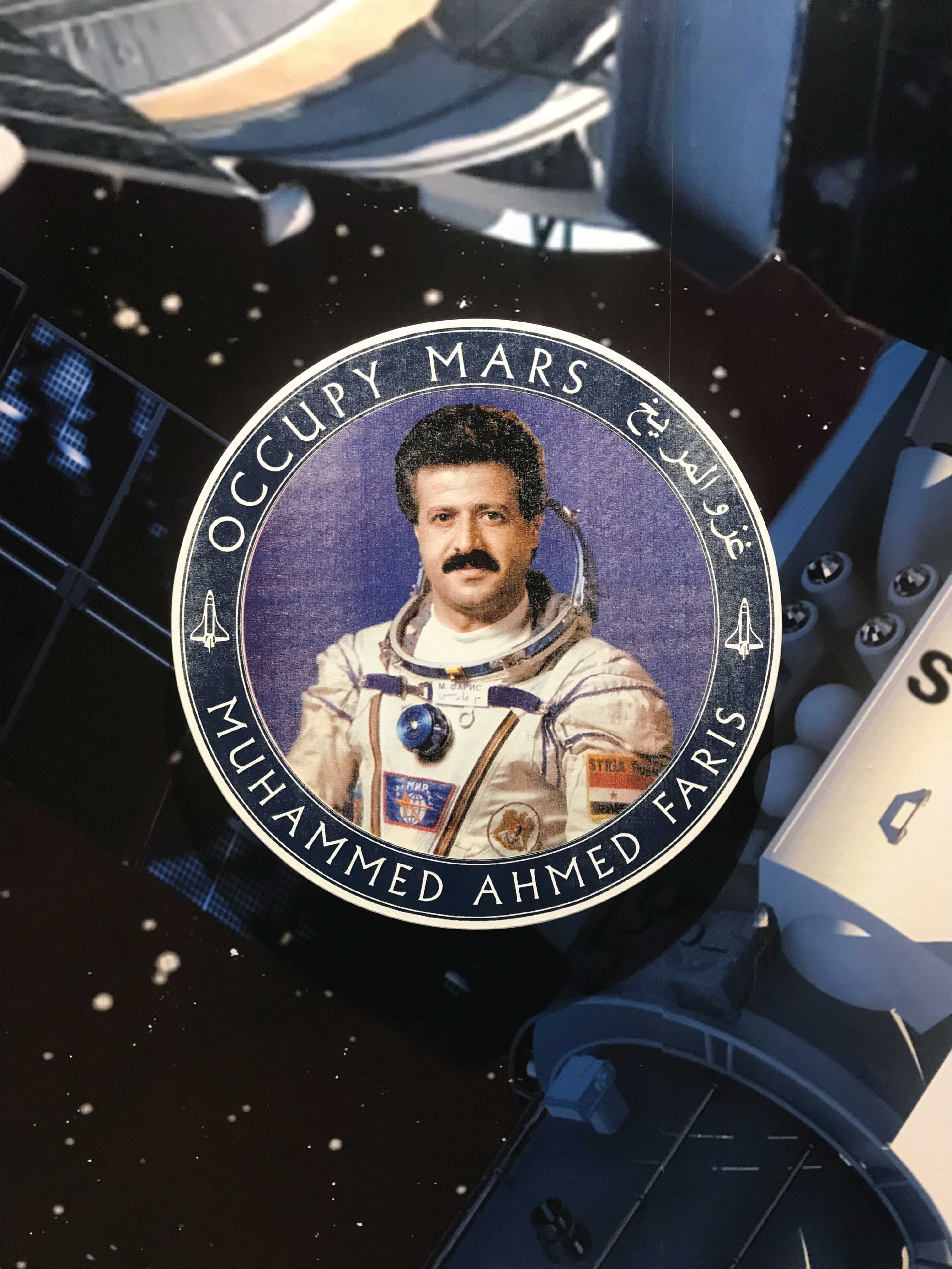
HALIL ALTINDERE, Space Refugee, 2016 Photography by Tansy Kaschak
Do Ho Suh
Drawing on a longing for home, the former US and current UK immigrant and Korean-born artist Do Ho Suh creates full-scale, hand-sewn, translucent fabric replicas of his past residences, underlining the important connections we make between physical places and memory.
From his childhood home in South Korea to all the places he has lived in as an adult in Seoul, London, and the apartment in New York City he inhabited for nineteen years, each of the colorful ghost homes is brought to life through shaped and embroidered details such as light fixtures, radiators, wall plugs, and handles.
As an individual living a nomadic existence, Suh travels from city to city to execute commissions and participate in exhibitions and says that his sculptures allow him “to carry my house with me” and to feel at home wherever he is. He uses the playful engineering to engage with migration and cultural displacement issues: At a time of mass global relocation, the loss of leaving one’s native country and searching for a new home has become a universal concern.
Moving through such accurate and ethereal impressions, Suh’s work can be experienced as a subtle yet powerful sensorial journey, awakening the feeling of being in flux, of crossing boundaries, and moving between emotional and psychological states.
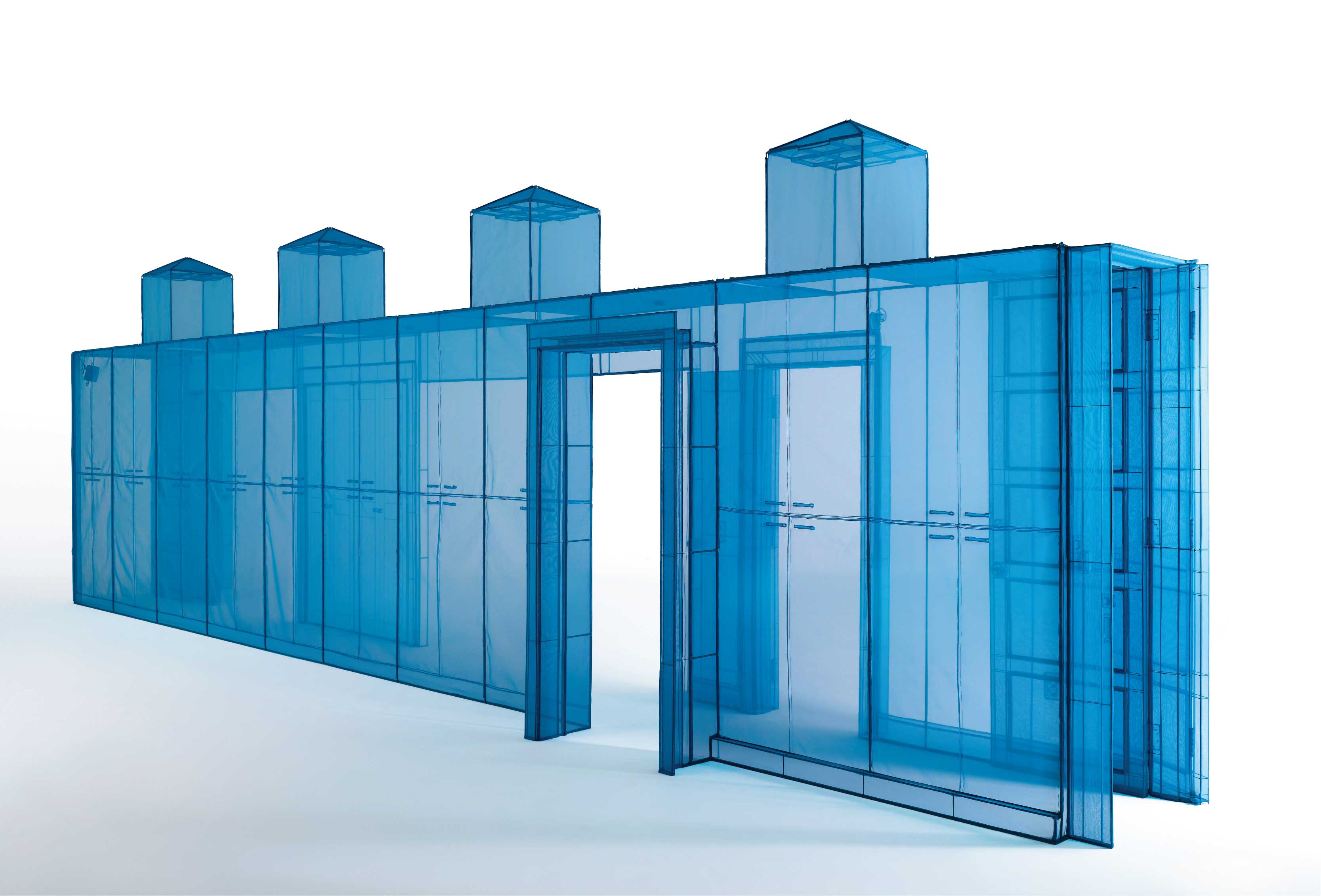
DO HO SUH, Hub, 260-7 Sungbook-Dong, Sungbook-Ku, Seoul, Korea, 2017 Photography by Taegsu Jeon
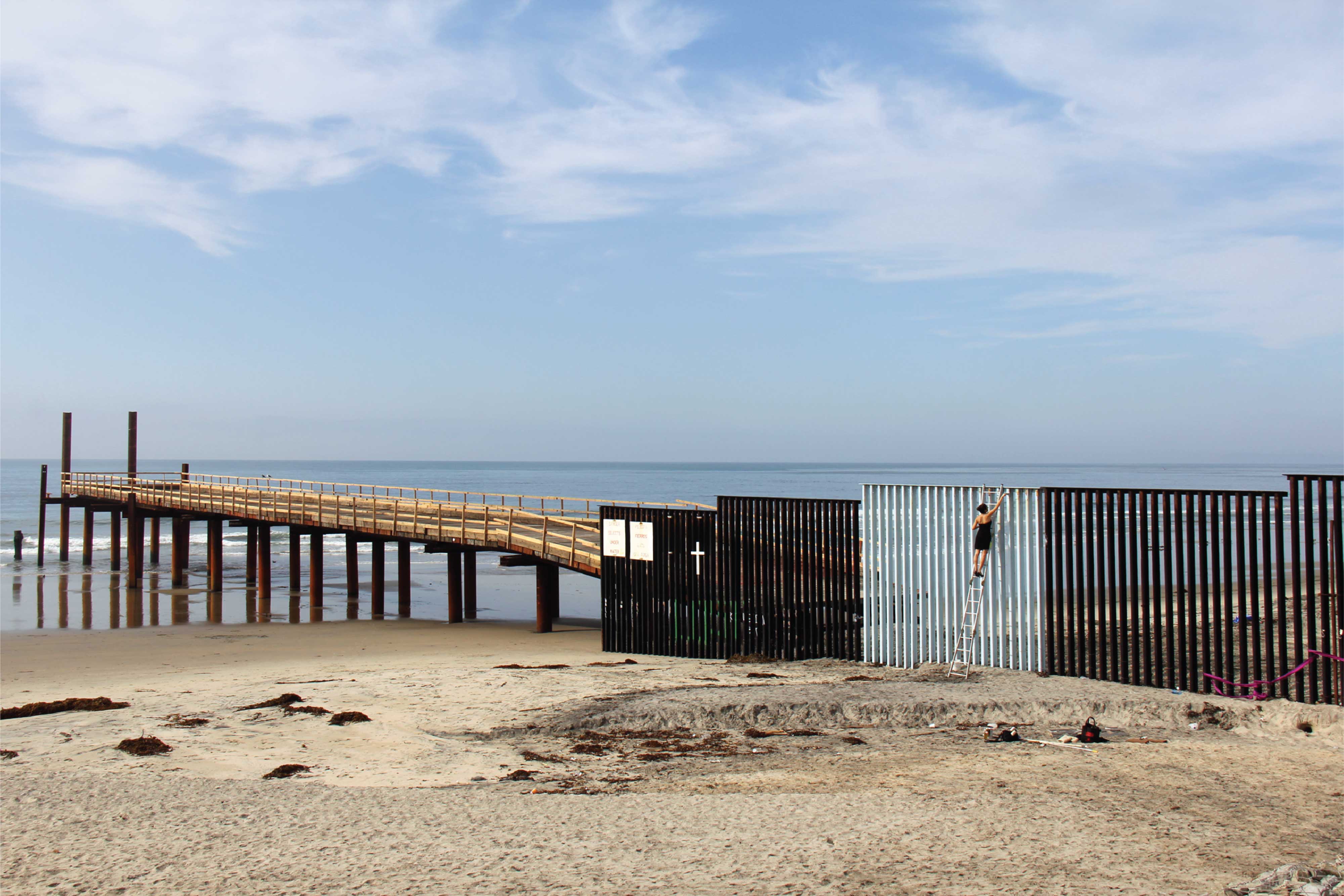
ANA TERESA FERNÁNDEZ, Borrando la Frontera (Erasing the Border), 2012 Courtesy of the artist and Gallery Wendi Norris, San Francisco
Ana Teresa Fernández
While some American politicians endure in their efforts to build dividing walls, the Mexican artist Ana Teresa Fernández is leading groups of volunteers equipped with paint rollers and brushes to “erase” the barrier dividing the US and Mexico.
Named Borrando la Frontera (Erasing the Border), the project is an effort to symbolically erase a long-standing physical barrier that separates families and
causes widespread distress. “It’s very sad watching families hold hands through
here,” says Fernández. “That’s as far as they go, they can’t even really hug.”
Although many Mexicans live alongside the border, most Americans only face it from a distance, and the US Border Patrol restricts the public from walking up to the fence. But people of all ages, both American and Mexican, have supported and encouraged Fernández to keep expanding the activations to other communities along the border. Born in Tampico, Mexico, the artist herself once crossed the frontier with her family and now lives in San Francisco.
For both those participating and witnessing, the blue-painted fence represents not just a new view but is a conduit to imagining a borderless society, to reflect on the experience of the wall, and to directly connect with others whose lives are impacted by the oppressive dividing line.
El Anatsui
Born in Ghana and based in Nigeria, El Anatsui’s personal migration story has historical weight in itself: In 1969, Ghana expelled Nigerians from the country and in 1983, Nigeria reciprocated in kind, evicting one million Ghanaians without the correct immigration documents.
During an earlier period when he was working with wood and clay, Anatsui found a plastic bag full of aluminum bottle caps left as trash outside his studio. He began to flatten, fold and fasten those and thousands of other salvaged metal bottle tops to create the oversized, shimmering wall hangings for which he has become most known.
The tapestry-like installations contemplate themes of trade, slavery, conumerism, migration, and the environment. During the colonial period, alcohol was carried by Europeans to exchange for goods and quickly became one of the key items used in the transatlantic slave trade. Each of the thousands of metal pieces that form Anatsui’s works bear traces of the countless lives, hands, and stories those bottles and caps passed through before being woven into his mutable wall-mounted compositions, inviting the viewer to reflect on all the intricate relationships of power they convey. As the artist himself has said, “Rather than recounting history, my art is telling about what history has provoked.”
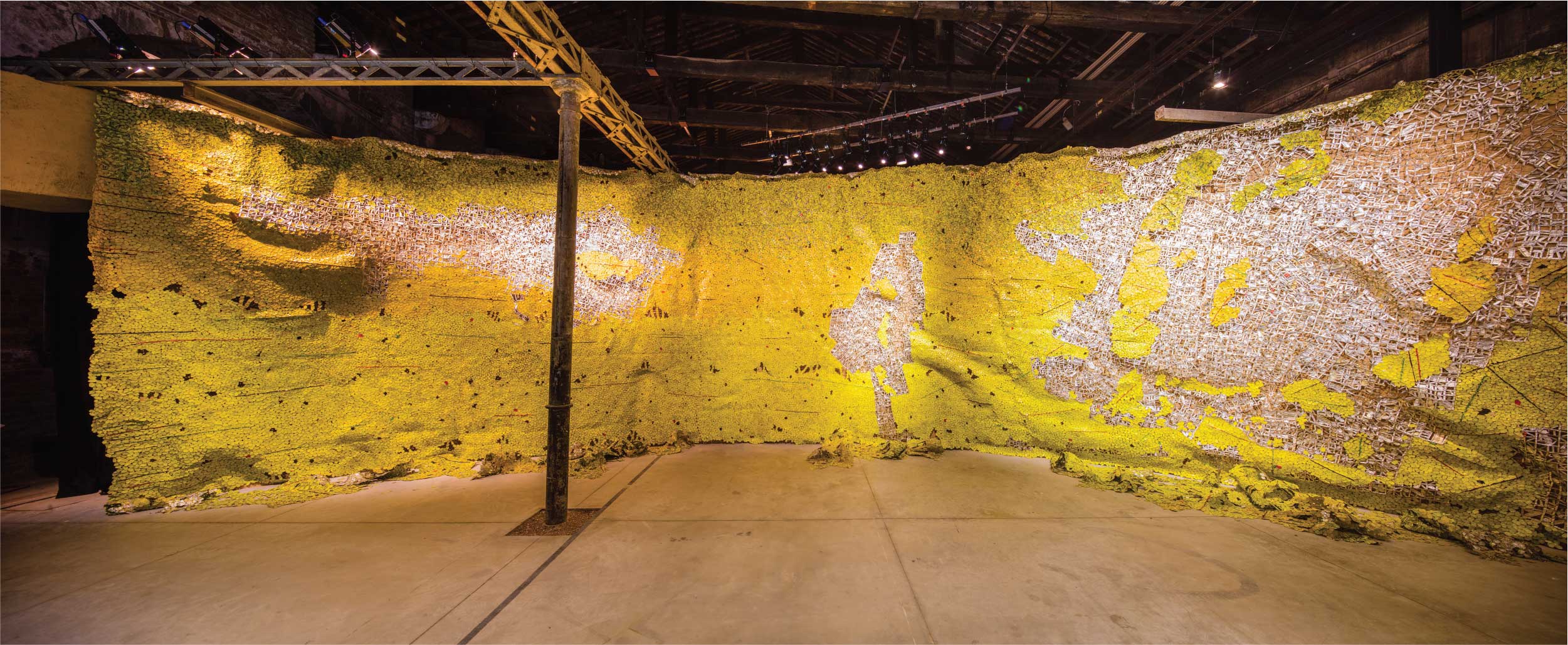
EL ANATSUI, Earth Shedding Its Skin, 2019 © El Anatsui. Courtesy of the artist and Jack Shainman Gallery, New York. Photography by David Levene
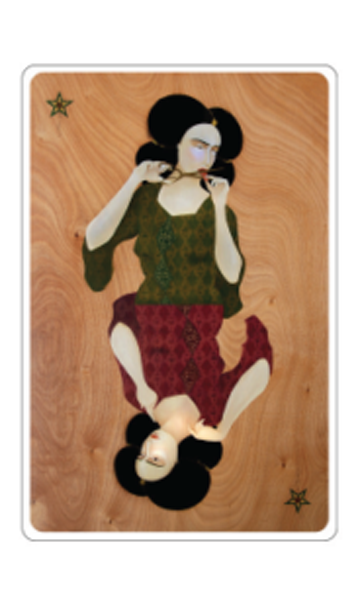
Hayv Kahraman
Born in Baghdad, Iraq, Hayv Kahraman’s life is an account of war, refuge, and search for identity. At age eleven, when life in her homeland was permanently disrupted by the American-led Desert Storm military campaign in 1990 during the Gulf War, Kahraman and her family fled to Sweden.
Today, Kahraman lives as a successful artist in Los Angeles, and her work addresses not only her personal refugee experience but the migrant consciousness and story of more than five million people within the Iraqi diaspora.
Although the alter ego-esque female figures that repeatedly occupy Kahraman’s canvases come from the artist’s autobiographical context, the depicted women are the embodiment of a shared story of forced exile and displacement.
Using her characters to explore and express the duality of otherness and the challenge of adapting to new cultures while remembering one’s origin, Kahraman creates a provoking narrative by assimilating contrasting cultural styles and genres: Italian Renaissance beauty ideals, Japanese ukiyo-e prints, and intricate geometric patterns formed by plain weaving techniques are the most notable.
Kahraman also uses sound to bring further depth to her message. At the opening of one of her solo shows in New York City, noises emulating air raid sirens were played on the phones of female actors during a performance piece. Starting with, “Let me share with you my memories,” five women of different cultural backgrounds read testimonials of the artist’s life, kindling a collective acknowledgement of a personal trauma.
Art & Culture
The power of art to inspire empathy and social action
Zen Buddhism and minimalist purity drive the celebrated architect
Moscow’s favorite media studio finds the perfect balance between art and commerce
Behind the scenes with the Bushwick nightlife collective promoting inclusivity and consent culture
DJ Extraordinaire
A medium in which two world-traveling, adventurous spirits absorb the globe’s vast curiosities and share them freely
A meditation guide for extraordinarily large groups
Experiences
Moscow’s favorite media studio finds the perfect balance between art and commerce
In his calls for environmental awareness, the modern explorer finds harmony between man and nature
Behind the scenes with the Bushwick nightlife collective promoting inclusivity and consent culture
DJ Extraordinaire
Food & Drink
The Michelin-starred chef has a story to tell you through his cooking
Six tips for considered and conscious travel
Personalities
Style
The classic martini plus the health benefits of green tea
How Nicholas Konert’s rainbow heart design became an international icon
As the CBD line Mowellens expands into skincare, its founder shares the personal story behind her company
Nature invades the urban jungle in the landscape designer’s expansive projects
The Ethopian model, activist, and entrepreneur uses her label Lemlem as a force for change

